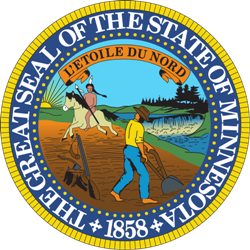Will Minnesota’s Competitive Gubernatorial Election Streak Continue in 2018?
Minnesota’s elections for governor have been decided by single digits in five consecutive cycles – the longest streak in state history

And for good reason.
While DFL candidates have won each of the last 16 statewide elections since 2008 (including presidential nominees), Democrats (pre- or post-DFL merger) have never won back-to-back gubernatorial elections in Minnesota with different nominees.
The party has been victorious in consecutive gubernatorial elections seven times since statehood, but none of these feats involved different nominees: John Johnson (1904 & 1906; 1906 & 1908), Orville Freeman (1954 & 1956; 1956 & 1958), Wendy Anderson (1970 & 1974), Rudy Perpich (1982 & 1986), and Mark Dayton (2010 & 2014).
The party has yet to demonstrate an ability to marshal support for its gubernatorial agenda among the electorate with an outgoing administration. Gopher State voters to this point have only been persuaded to reelect a sitting Democratic governor – never to vote a new one into office as a fellow party member exits.
By contrast, Republicans have accomplished this feat 13 times since statehood.
Moreover, despite Democratic dominance over the last decade in statewide races, Minnesota has been a hotbed for competitive gubernatorial races with each of the last five contests for governor decided by single digits, averaging a nation-low 3.5 points during this span:
- 1998: Reform Party nominee Jesse Ventura beat Republican St. Paul Mayor Norm Coleman by 2.9 points
- 2002: Republican Tim Pawlenty defeated DFL State Senator Roger Moe by 7.9 points
- 2006: Governor Pawlenty beat DFL Attorney General Mike Hatch by 1.0 points
- 2010: Former DFL U.S. Senator Mark Dayton defeated GOP State Representative Tom Emmer by 0.4 points
- 2014: Governor Dayton defeated Republican Hennepin County Commissioner Jeff Johnson by 5.6 points
Minnesota is one of four states to have currently hosted a competitive gubernatorial election in at least five consecutive contests.
Rhode Island’s last six races for governor have been decided by single digits dating back to 1994 – the largest and longest streak in the nation.
Like Minnesota, Rhode Island has seen a strong presence on the ballot by third party and independent candidates – winning the governorship in 2010 (with independent Lincoln Chafee) and averaging 13.8 percent of the vote during this six-cycle span.
The vote for non-major party candidates in Minnesota has averaged 16.6 percent over the last five cycles.
Gubernatorial elections in Oregon and Wisconsin have also been decided by less than 10 points in each of the last five contests.
Maine and Washington have had competitive races in the last four elections, with Florida and West Virginia at three in a row, and Connecticut, Illinois, Indiana, Massachusetts, Montana, New Hampshire, Pennsylvania, and Vermont with two.
The five-cycle streak of single-digit victory margins in races for governor in Minnesota is the longest in state history.
The Gopher State previously had four-cycle streaks twice, once in the 19th Century and once in the 20th Century:
- 1886 (1.1 points), 1888 (9.3 points), 1890 (1.0 points), and 1892 (5.7 points)
- 1960 (1.5 points), 1962 (0.0 points), 1966 (5.7 points), and 1970 (8.5 points)
Minnesota also had a three-cycle streak with single-digit victory margins in 1896 (1.1 points), 1898 (8.0 points), and 1900 (0.7 points).
With multiple sitting political officeholders vying for the DFL and Republican nominations, all signs are that both parties believe they have a chance to win in November 2018, which may very well end up resulting in close race for governor in the state for the sixth straight cycle.
Follow Smart Politics on Twitter.
